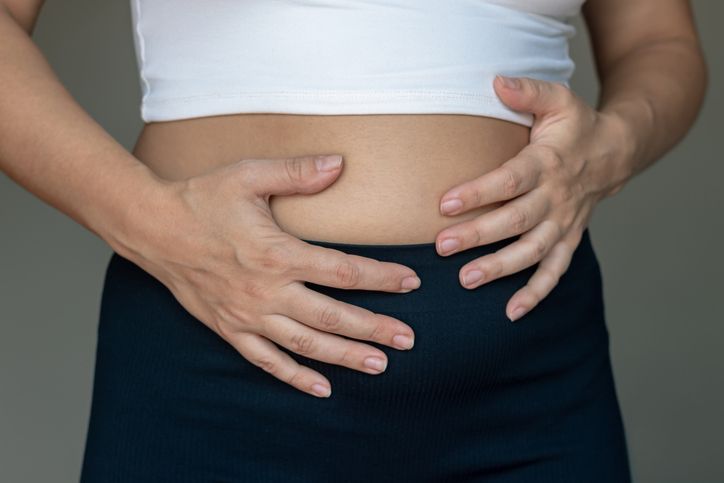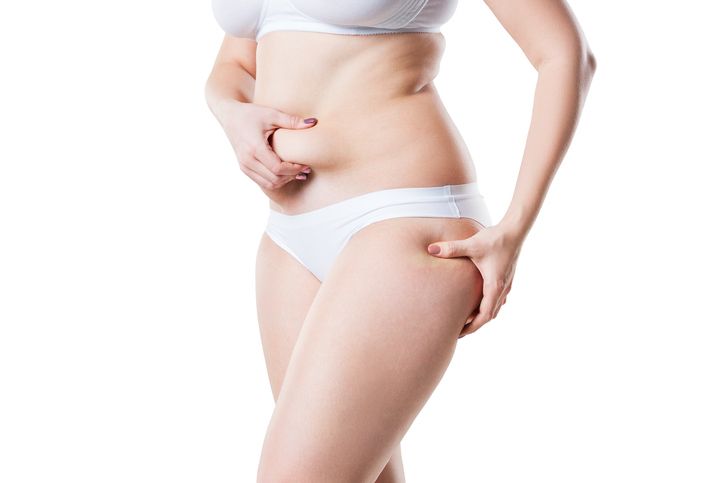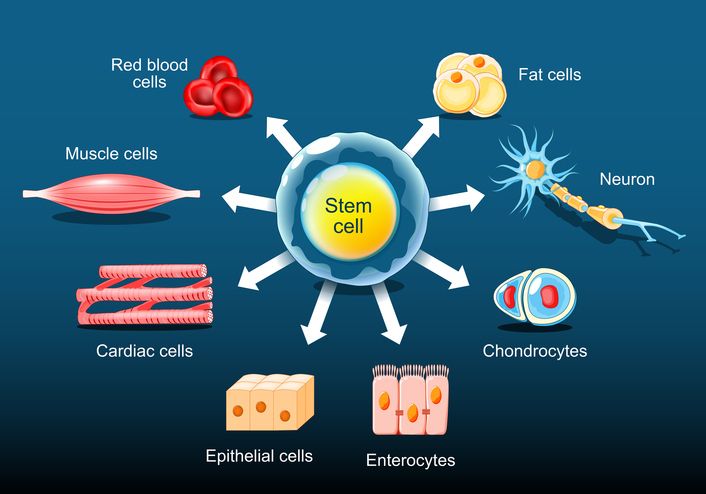
Author: Natalie Ng|Updated: 20 June 2025
If your stomach feels heavier than usual or your clothes suddenly feel snug, it’s easy to wonder whether you’re dealing with bloating or actual fat gain. While they can look and feel similar, the causes and patterns behind them are completely different. Bloating usually comes on quickly and tends to fade within a day or two. It often feels tight or swollen, especially in the lower belly. Body fat, on the other hand, builds slowly over time. It feels soft, spreads more evenly, and doesn’t shift throughout the day the way bloating can. There are plenty of reasons why you might feel bloated—everything from how your body digests food to conditions like irritable bowel syndrome, fluid retention, or shifts in hormones during your menstrual cycle. Fat gain, meanwhile, often ties back to things like what you’re eating, how often you move, and other daily habits that affect your weight over time. The signs might overlap, but they don’t behave the same. Paying attention to when it shows up, where you feel it, and how it feels can help you tell the difference between bloating and fat gain. Keep going—we’ll walk you through 8 key ways to help you figure out what’s really going on.

Bloating vs Fat Gain Difference 1: Timing and Duration of Symptoms

Bloating appears fast and fades quickly
If your stomach suddenly feels swollen, especially after a meal, you're likely experiencing abdominal bloating. This type of bloating often shows up within hours and can ease just as quickly. It tends to fluctuate throughout the day and may feel more intense after eating certain foods or drinking carbonated beverages.
Bloating can also come with:
• a tight or stretched sensation in the belly
• abdominal pain or pressure
• changes during your menstrual cycle
• digestive symptoms like gas or fewer bowel movements
If your jeans feel tight in the morning but fit fine by evening—or the other way around—it’s a sign your belly is reacting to temporary triggers, not gaining weight.
Fat gain develops slowly and stays steady
Abdominal fat gain doesn’t follow a daily cycle. It builds up over weeks or months, and once it's there, it doesn't disappear within a few hours. Unlike bloating, body fat tends to feel soft and doesn’t create the same tight or inflated sensation.
This kind of fat gain usually links to:
• eating more calories than you burn
• regular intake of sugary foods, processed foods, or trans fat
• skipping regular exercise
• lifestyle changes or hormonal imbalances
Your belly will likely feel the same from morning to night, with no major shifts depending on what you’ve eaten or how you slept.
Noticing daily changes helps tell the difference
If you’re unsure whether you’re feeling bloated or gaining fat, try tracking what’s happening in your body each day. Keep a short journal for a week and note:
• when your belly feels the largest or tightest
• what you’ve eaten and how much
• if you feel gassy, constipated, or experience abdominal discomfort
• whether your symptoms improve after bowel movements
This can help reveal whether you're reacting to digestive issues like irritable bowel syndrome, lactose intolerance, or small intestinal bacterial overgrowth—or gradually gaining weight due to lifestyle factors.

Bloating vs Fat Gain Difference 2: Body Changes in Expansion Patterns

Bloating stays in the midsection
When bloating occurs, the swelling usually concentrates around the stomach. It creates a stretched, tight feeling that can show up quickly, especially after meals. This type of expansion doesn’t spread across the body—it stays focused in one spot. The belly may feel inflated, rounded, and firm to the touch, often accompanied by abdominal discomfort or digestive symptoms like gas or fluid retention.
This kind of expansion is temporary and often tied to the digestive tract reacting to certain foods, small intestinal bacterial overgrowth, or underlying conditions like irritable bowel syndrome.
Body fat builds across multiple areas
Abdominal fat gain doesn’t limit itself to one part of the body. It develops over time and appears in areas based on hormones and genetic patterns. You might notice it in your face, thighs, arms, and hips—not just your belly. It tends to feel soft rather than tight and creates visible changes in how clothing fits across your frame.
Men typically store more visceral fat around the waist, while women often see abdominal fat settle lower, around the hips and thighs. These patterns give the body a more even appearance as fat increases over time.
Shape and texture show clear signs
The texture and location of expansion can help tell the difference between bloating and fat gain. Bloating is firm and central. It usually makes the belly protrude while the rest of the body stays the same. Fat gain spreads gradually, creates softness that’s easy to pinch, and changes the way the entire body looks—especially over weeks or months.
Book Now to Experience
S6 Body Sculpting Treatment
1 Minute Self-Registration
Date should not be before minimal date

Bloating vs Fat Gain Difference 3: Texture and Reaction to Pressure
Bloating creates tightness and tension in the stomach
When you feel bloated, your belly often becomes firm, rounded, and slightly uncomfortable to touch. It may feel stretched—like there’s pressure building just under the surface. This tightness usually peaks after meals or during digestive discomfort and can be linked to conditions like irritable bowel syndrome, fluid retention, or gas buildup in the digestive tract.
You might notice:
• the belly feels smooth on the outside but resists gentle pressure
• pressing on the area can cause discomfort or a sense of fullness
• tenderness may appear, especially when bloating is linked to severe constipation or bacterial imbalance
This kind of firmness isn’t constant—it tends to shift throughout the day depending on digestion, foods consumed, and your body's response.
Body fat feels soft, mobile, and doesn’t react to touch
Abdominal fat sits under the skin and has a soft, spongy texture. It doesn’t feel tight or painful. When you press it, it moves easily and can be pinched between your fingers. This is a sign of subcutaneous fat, which builds gradually and doesn’t fluctuate with meals or digestive symptoms.
Fat gain in the midsection usually feels:
• soft and pliable, with no resistance or pressure
• painless, even when pressed firmly
• consistent in texture throughout the day
Unlike bloating, this tissue doesn’t respond to digestion or food intake. It remains stable regardless of time, meals, or position.
Simple touch cues can help tell the difference
Try this: lie down and gently press on your stomach. If you feel solid resistance or mild discomfort, you're likely experiencing abdominal bloating. If the tissue compresses easily and feels soft, that points to abdominal fat gain.

Bloating vs Fat Gain Difference 4: Body Shape and Fat Distribution
Bloating changes the stomach only
When you experience abdominal bloating, it usually affects just the stomach area. The rest of your body stays the same, so the change in shape is isolated. Your belly might stick out more than usual, creating a rounded look, while your arms, legs, and face remain unchanged.
This makes the change feel sudden and out of place. Clothing may feel tight around the waist but fit normally elsewhere. This type of swelling is common with digestive issues, especially if triggered by certain foods or related to your menstrual cycle, fluid retention, or bacterial infections in the GI tract.
Fat gain affects multiple parts of the body
Abdominal fat gain shows up in a more gradual and even pattern. You may notice extra fullness not just around your waist but also in other areas like your face, hips, arms, and thighs. Over time, your silhouette starts to shift as fat settles in different parts of the body.
You’ll likely feel changes in how your clothing fits overall—not just at the waistline. For example, your shirt sleeves may feel tighter or your pants might fit more snugly around the hips and thighs. These slow, steady changes reflect lifestyle factors like eating foods high in calories or fat, reduced physical activity, and hormonal shifts.
Silhouette differences reveal the cause
If your stomach looks noticeably swollen while the rest of your body hasn’t changed, it’s more likely bloating. But if your entire frame feels fuller, and you notice more coverage across several areas, you’re likely seeing signs of excess fat rather than temporary abdominal bloating.
Book Now to Experience
S6 Body Sculpting Treatment
1 Minute Self-Registration
Date should not be before minimal date

Bloating vs Fat Gain Difference 5: Morning and Evening Size Changes
Bloating shifts throughout the day
Stomach bloating tends to change noticeably from morning to night. After waking, your belly often feels flatter, especially if your digestive system has had time to process food and reduce gas or water buildup. As the day goes on, your belly may feel more swollen—especially after meals or eating foods that irritate your digestive system.
These daily changes are influenced by:
• meals and snacks, especially those high in sodium or sugar
• carbonated drinks and certain foods that cause gas
• digestive conditions like irritable bowel syndrome or food intolerances
The swelling often peaks in the evening, then resets overnight as your body rests and digestion slows down.
Fat gain stays the same all day
Body fat doesn’t fluctuate based on the time of day. If you’re gaining weight, your belly shape and size will look and feel the same in the morning and evening. Whether you’ve eaten or not, the appearance remains stable—because it’s not affected by food volume or temporary water retention.
This type of change builds up gradually and stays consistent. Abdominal fat gain is more noticeable over weeks and doesn’t shift back and forth like bloating often does.
Time-based changes reveal useful patterns
Weighing yourself in the morning—after using the bathroom and before eating—can help show your true weight baseline. If your belly changes size by several inches throughout the day, especially after eating or drinking, that points toward bloating. If there’s no real difference in how your stomach looks or feels from morning to night, fat accumulation is more likely.

Bloating vs Fat Gain Difference 6: Changes Linked to Meals and Digestion
Bloating reacts to eating habits and digestion
Stomach bloating often follows specific meals or eating patterns. You might feel your belly swell after eating foods high in salt, trans fat, or processed ingredients. Certain combinations—like carbonated drinks with heavy meals—can lead to gas buildup and make your stomach feel distended within hours.
This type of bloating is closely tied to digestive symptoms, especially for those with health conditions like lactose intolerance, irritable bowel syndrome, or small intestinal bacterial overgrowth. In these cases, even healthy foods can cause abdominal bloating if the digestive system isn’t breaking them down properly.
Many people notice their stomach feels tight and enlarged by evening but looks more normal again in the morning. These patterns are temporary and usually reset once the digestive tract clears out or bowel movements resume.
Fat gain develops slowly and doesn’t respond to single meals
Abdominal fat doesn’t change in response to a single meal or day of eating. It develops over time through regular intake of more calories than the body needs. Gaining weight from body fat is usually the result of habits—like eating too many sugary foods or skipping regular exercise—not from one specific type of food or meal timing.
Body fat isn’t influenced by digestive symptoms or short-term reactions. The tissue builds gradually, doesn’t shift with digestion, and doesn’t resolve overnight.
Meal response differences help identify the cause
If you feel abdominal discomfort or visible belly swelling shortly after eating, bloating is more likely. If your belly shape stays the same no matter when or what you eat, and your clothes feel tighter across the board, you’re probably seeing signs of abdominal fat gain instead.
Book Now to Experience
S6 Body Sculpting Treatment
1 Minute Self-Registration
Date should not be before minimal date

Bloating vs Fat Gain Difference 7: Changes in Physical Comfort During Movement
Bloating affects comfort and mobility
When bloating occurs, it can affect how your body feels during daily activities. You might feel tightness or pressure in your abdomen when bending, sitting, or exercising. Movements that involve your abdominal muscles—like twisting, stretching, or core workouts—can feel more uncomfortable when bloating is present.
In some cases, you may notice:
• gurgling sensations or internal shifts when walking or running
• increased abdominal pain or cramping with movement
• a feeling of heaviness or fullness that eases when lying flat
These reactions are linked to digestive symptoms, gas buildup, or water retention that shifts with gravity or motion.
Fat gain stays consistent during activity
Abdominal fat doesn't change how you feel during movement in the same way. It stays in place, feels soft, and doesn't create pressure or internal sensations. Whether you're sitting, walking, or exercising, body fat doesn’t cause the same kind of bloated discomfort or shifting sensations.
This type of weight gain may slightly affect endurance or joint strain over time, but it won’t cause the tight, inflated feeling that bloating does—especially not within hours of a meal.
Movement responses help reveal the cause
If certain movements make your belly feel worse or create pressure deep in the abdomen, bloating is likely the cause. If activity doesn’t noticeably affect how your midsection feels, and you’re only noticing size or softness, the changes are more likely related to abdominal fat.

Bloating vs Fat Gain Difference 8: Symptoms and Triggers That Come With Each
Bloating brings digestive symptoms and discomfort
Abdominal bloating rarely shows up on its own. It often comes with other symptoms tied to your digestive system. These might include gas, irregular bowel movements, fluid retention, or abdominal pain. The bloated feeling can appear suddenly and change throughout the day, depending on what you've eaten, your stress levels, or underlying health conditions.
Common triggers include:
• foods high in sodium, trans fat, or processed ingredients
• carbonated beverages, too much salt, or eating too quickly
• digestive issues like lactose intolerance, celiac disease, or inflammatory bowel disease
• bacterial infections, small intestinal bacterial overgrowth, or a disrupted balance of healthy gut bacteria
Bloating may also appear alongside vomiting, mild weight loss, or difficulty breathing if there’s a more serious medical condition involved. In those cases, it's important to seek medical attention from a healthcare provider or primary care physician.
Fat gain leads to slow body changes without sudden symptoms
Abdominal fat gain usually doesn’t come with digestive symptoms or pain. Instead, it shows up gradually and reflects lifestyle habits over time. You might notice your clothes fitting tighter, your energy levels shifting, or physical changes like a fuller face, thicker waist, or soft tissue building in areas beyond the belly.
Common triggers include:
• eating more calories than your body uses
• high intake of sugary foods or fewer lean proteins
• lack of regular exercise and physical activity
• hormonal imbalances, poor sleep, or long-term stress eating
These changes often go unnoticed until clothes stop fitting the same, or you compare body photos over time.
Tracking symptoms gives more clarity
If changes in your stomach come with gas, pain, or swelling that varies throughout the day, it’s likely abdominal bloating. If changes appear gradually and remain stable without any digestive symptoms, you’re probably dealing with abdominal fat gain.
Book Now to Experience
S6 Body Sculpting Treatment
1 Minute Self-Registration
Date should not be before minimal date

Bloating vs Fat Gain: Common Lifestyle Triggers Behind Each
Daily patterns linked to bloating
Certain lifestyle habits make abdominal bloating more likely, especially when they affect the way your digestive system works. Eating quickly, skipping meals, or relying on foods high in sodium or processed ingredients can all lead to gas buildup, water retention, and irregular bowel movements.
Other common triggers include:
• sugary foods or carbonated drinks that upset the digestive tract
• large meals that overwhelm digestion, especially at night
• poor balance of healthy gut bacteria, which can be disrupted by frequent use of over-the-counter laxatives or certain medications
People who’ve recently undergone abdominal surgery or experience frequent digestive symptoms—like those linked to lactose intolerance or irritable bowel syndrome—may find bloating happens more regularly. In these cases, lifestyle changes like mindful eating, smaller meals, and better hydration can help relieve bloating and support a healthier gut.
Lifestyle habits that lead to fat gain
Abdominal fat gain usually stems from gradual changes in how your body stores and uses energy. Eating more than your body burns—especially from foods high in fat, refined carbs, or hidden calories—can slowly lead to belly fat and excess weight.
Factors that contribute to abdominal fat gain include:
• eating out often or relying on processed meals
• low physical activity or lack of regular exercise
• chronic stress or disrupted sleep that affects hunger and hormone levels
• slow recovery from hormonal shifts or health conditions that affect metabolism
While bloating can appear suddenly, abdominal fat builds slowly and remains unless lifestyle factors change. Shifting your eating habits to include more lean proteins, fewer sugary foods, and a steady exercise routine can help lose fat over time.

S6 Body Sculpting Treatment: A Non-Invasive Option for Targeted Fat Reduction
Some areas of the body hold on to excess fat no matter how carefully you eat or how much you exercise. While abdominal bloating often fades on its own, true abdominal fat gain is harder to manage—especially in spots like the waist, belly, thighs, or back. If you’ve already made changes to your diet or lifestyle and still see stubborn fat, S6 Body Sculpting Treatment offers a targeted, non-surgical way to improve body shape and reduce fat volume in specific areas.
How S6 Body Sculpting Treatment works
S6 Body Sculpting uses a low-energy bio-laser to target subcutaneous fat. The laser energy penetrates the skin and helps break down fat cells by triggering the release of fatty acids. At the same time, a vacuum suction tool is used to support lymphatic drainage and boost your metabolic rate.
During each session:
• Aesthetic therapists identify areas with stubborn fat
• The device delivers controlled laser energy to break down fat tissue
• Vacuum suction encourages fat removal through the digestive and lymphatic systems
• The treatment also stimulates collagen, helping firm up the skin over time
This combination helps reduce abdominal fat and improve the appearance of areas that are typically resistant to lifestyle changes alone.
Advantages of the treatment
Unlike procedures that involve injections or surgery, S6 Body Sculpting is completely non-invasive. There’s no need for downtime, and most people return to their normal routines right after treatment. It’s suitable for people dealing with excess fat in areas like the belly, lower buttocks, calves, arms, and thighs—especially if those areas aren’t responding to regular exercise or a healthy diet.
Key benefits include:
• Focused fat reduction in up to seven major body zones
• Support for skin tightening through collagen stimulation
• No skin damage, no medication, and no extended recovery period
• Comfortable procedure with minimal risk
Whether you’re looking to reduce belly fat, shape the waist, or smooth out the back, this treatment helps improve contours without disrupting your schedule.
Target fat—not bloat
While lifestyle changes can relieve bloating by improving gut bacteria, bowel movements, and digestion, abdominal fat gain needs a different approach. S6 Body Sculpting doesn’t treat stomach bloating or digestive symptoms, but it offers a practical solution for reducing excess fat stored under the skin—especially in areas that don’t respond to diet changes alone.
Book your S6 Body Sculpting Treatment today
If you’re dealing with stubborn abdominal fat that doesn’t shift no matter how well you eat or how often you exercise, S6 Body Sculpting can help reshape your body safely and effectively. Book S6 now and start your personalized treatment plan.
New Beauty's S6 Body Sculpting TreatmentBook Now to Experience
S6 Body Sculpting Treatment
1 Minute Self-Registration
Date should not be before minimal date
FAQ
Can bloating cause temporary weight gain on the scale?
Yes, bloating can lead to temporary weight gain due to water retention and gas buildup in the digestive tract. This doesn’t mean you’re gaining fat—it's simply a shift in fluid and pressure that can show up as 2 to 5 extra pounds on the scale. Abdominal bloating often resolves within a day or two, especially after bowel movements or dietary adjustments. It’s different from true abdominal fat gain, which builds gradually and doesn’t fluctuate hour to hour.
Why does abdominal bloating get worse in the evening?
Abdominal bloating usually becomes more noticeable as the day progresses. This happens because the digestive system slows down after large meals or frequent snacking, especially if the foods are high in sodium, processed ingredients, or carbonated drinks. For people with digestive symptoms or conditions like irritable bowel syndrome or lactose intolerance, stomach bloating may worsen after dinner or before bed due to how the body breaks down certain foods over time.
Is belly fat the same as visceral fat?
Belly fat is a general term that includes both subcutaneous fat and visceral fat. Subcutaneous fat sits just beneath the skin and is what most people can pinch. Visceral fat, on the other hand, surrounds internal organs and is linked to higher health risks like high blood pressure and insulin resistance. While both types contribute to abdominal fat gain, only visceral fat is considered metabolically active and associated with more serious medical conditions.
Can stress lead to both bloating and abdominal fat gain?
Chronic stress can cause both digestive issues and body fat accumulation. High stress levels may disrupt healthy gut bacteria and slow down digestion, leading to abdominal bloating, gas, and fluid retention. At the same time, stress hormones like cortisol can promote abdominal fat gain, especially when paired with stress eating or poor sleep. Over time, these lifestyle factors can lead to noticeable changes in both body shape and digestive comfort.
How do I know if my bloating is a sign of a medical condition?
Bloating that comes with other symptoms—such as vomiting, weight loss, severe constipation, or persistent abdominal pain—may indicate a more serious medical condition. Conditions like inflammatory bowel disease, celiac disease, small intestinal bacterial overgrowth, or bacterial infections in the GI tract can all cause chronic abdominal bloating. If bloating is frequent, painful, or unpredictable, it’s best to consult a healthcare provider or primary care physician for proper evaluation.
Recommended Articles
COPYRIGHT© NEW BEAUTY MANAGEMENT LIMITED 2025. ALL RIGHT RESERVED.




